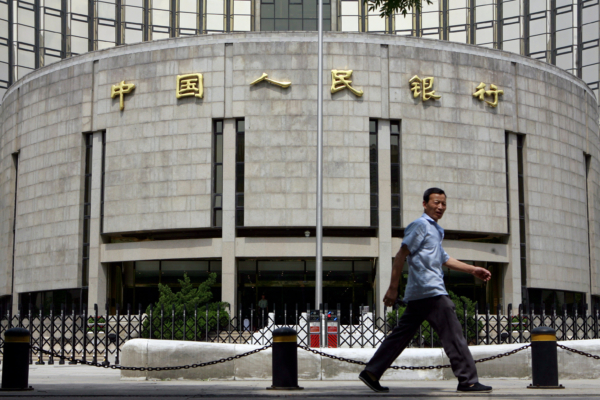Amid the backdrop of a slowing economy, the People’s Bank of China has been frequently lowering the reserve requirement ratio (RRR), also known as cutting reserve ratio. On September 5th, officials from the People’s Bank of China released further signals of RRR cuts. Experts believe that the central bank’s “flooding” measures are only temporary palliatives for the market and cannot solve China’s economic woes.
RRR, officially known as the “central bank lowering the reserve requirement ratio,” is one of the three major policy tools for macroeconomic regulation by the central bank. Generally, cutting the RRR means releasing commercial banks’ reserves held at the central bank, increasing market liquidity supply, and benefiting the production sector.
On September 5th, at a press conference held by the People’s Republic of China, a reporter asked about the scope and necessity of further interest rate and RRR cuts in the monetary policy this year. Zou Lan, Director of the Monetary Policy Department of the People’s Bank of China, responded that the policy effects of the earlier RRR cuts this year are still apparent, with the average deposit reserve ratio of financial institutions at around 7%, indicating “some room for further adjustment.”
Following the lifting of the policy on “dynamic zeroing,” China’s economy has been stagnant. In recent years, the People’s Bank of China has frequently announced RRR cuts. Prior to this, China had reduced RRR twice annually for two consecutive years.
In February 5th of the current year, the central bank had cut the deposit reserve ratio by 0.5 percentage points, releasing approximately 1 trillion yuan of long-term funds, exceeding the efforts of the previous two years. However, since the RRR cut, there has been no apparent stabilization in the stock and property markets.
American economist Davy J. Wong told Dajiyuan that the current RRR has been lowered to 7%, which historically is already considered relatively low. Therefore, there is limited room for further RRR cuts, and it cannot alleviate the current economic challenges. The official statements are just a placebo.
He explained that with the current economic downturn in China, many companies are going bankrupt, and the decline in real estate prices, primarily used as collateral, has led to very high non-performing loan ratios in banks. When the deposit reserve ratio is too low, many banks not only face bankruptcy risks but also risks of being unable to repay depositors, thus increasing systemic risks, making the central bank’s statements more of a psychological reassurance.
Wong further explained that despite cutting the deposit reserve ratio by 0.5%, releasing 1 trillion into the market, economic activities in 2024 have not shown signs of improvement. There are indicators that the Purchasing Managers’ Index (PMI) remains below the prosperity line. The economy continues to languish with worsening exports, stagnant income growth for citizens, state-owned enterprises continuing to monopolize markets, and private enterprises not thriving. This indicates that the increased liquidity has not flowed into the real economy effectively.
“In just the first half of 2024, non-tax revenue in China has increased by about 10%…

